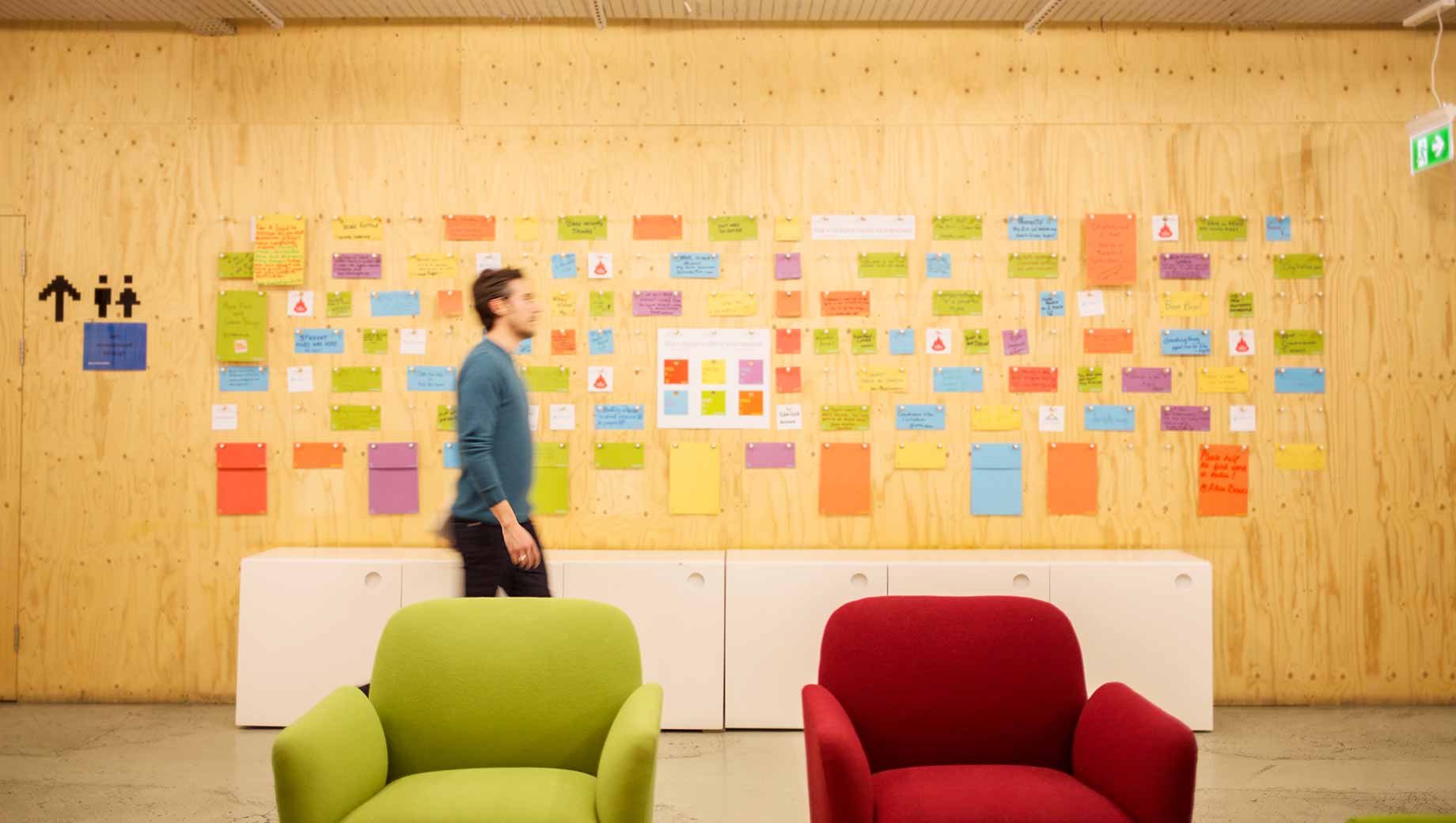Story Highlights
- Leaders are responsible for facilitating innovation
- An innovation strategy aligns resources and people to drive innovation
- Process and structure feed creativity
Disruptive forces and abrupt marketplace changes are shrinking company lifespans. One study projects that the average company tenure on the S&P 500 will wither to 12 years by 2027. And within 10 years, about half of S&P 500 companies will have been replaced.
To survive, companies are ramping up innovation. Gallup analytics shows that 61% of U.S. employees agree or strongly agree that their employer expects them to be creative at work.
But simply telling employees to think creatively isn't enough -- leaders must continually facilitate innovation and infuse creativity in their work culture.
To this end, leaders should adhere to four guiding principles necessary for innovation: the right strategy, people, processes and structure.

Visual of the four guiding principles of innovation: strategy; encouraging people to try, fail fast and learn from mistakes; creating processes that propel innovation; and using structure that meets physical, temporal and collaborative needs.
Strategy: Provide a road map for innovation.
Leaders must communicate their vision for innovation and intrapreneurship -- through words and action. Organizations with a clear vision for innovation help employees develop smart ideas and quickly test, refine and scale them to become marketable products and services.
Organizations must also strategically invest in innovation. To determine the ideal total investment, leaders need to do their homework. They should consider factors such as industry demands, market conditions and their company's existing portfolio. Investing more does not necessarily correlate to superior innovation. One 2018 study found that research and development expenditures across the 20 most innovative global companies ranged from as little as 3.6% of their revenue to more than 25%.
People: Encourage talent to try, fail fast and learn from mistakes.
To cultivate innovative mindsets, leaders need to create an environment that empowers employees to try, fail fast and learn from their mistakes. Employees will back down from innovation if their ideas are poorly recognized -- or worse, condemned.
Unfortunately, Gallup research shows that just 18% of U.S. employees strongly agree they can take risks at work that could lead to important new products, services or solutions.
To remedy this problem, leaders should publicly celebrate employees' innovation efforts. The best organizations ensure their performance management processes develop and incentivize innovative action and treasure diverse ideas.
Processes: Digitize activities to funnel and propel innovation.
Leaders should make sure that organizational systems accelerate innovation, not hinder it. Internal communication should keep agile teams aligned on where and how to focus innovation efforts, when to shift, and what to do next when a great idea strikes.
Leaders should digitize and simplify processes wherever possible. This can help companies better identify customer needs and react with fewer iterations.
Samsung's C-Lab (Creative Lab) allows employees to pitch their ideas, collaborate and convert ingenuity into marketable innovation. It exists to foster innovation. Samsung's approach cultivates brilliant thinking, differentiates flawed ideas quickly and consistently generates novel opportunities.
Structure: Meet physical, temporal and collaborative needs.
Physical collaborative spaces are also important for increasing innovation. Leaders can make creativity part of employees' regular focus by providing dedicated, well-equipped spaces for innovation.
Truly innovative workspaces provide a variety of tools like rolling flipcharts or glass walls employees can write on to capture and ponder what might otherwise be fleeting innovative ideas.
Leaders should also designate sufficient working hours for innovative efforts. If organizations want to deliver more and better ideas, they need to revise role expectations accordingly. For example, Google encourages employees to devote 20% of their time to developing new solutions that will benefit the company.
When it comes to collaboration, organizations should think outside their walls. Even the most mammoth organizations can't innovate alone. Leaders who proactively build a strong ecosystem of collaboration will gain a wellspring of ideas and approaches. The best organizations cultivate a wide range of partnerships, including other companies, academic institutions and governments.
For instance, despite being a multibillion-dollar company, BMW Group partners with academic institutions like the Technical University of Munich and startups such as Lime to keep up with an ever-changing industry.
Even the most mammoth organizations can't innovate alone.
In a matter of decades, innovation evolved from a laboratory activity reserved for experts to complex ecosystems that never sleep.
Disruptive startups and young organizations such as Tesla and Facebook have proven that organizational size and heritage don't guarantee success. If organizations don't constantly generate new ideas and products, the competition will. And the lifespan is only shortening for those who don't make the cut.
Make innovation a staple of your workplace culture:
- Maximize employee potential with a strengths-based approach.
- Learn more about how the employee experience can foster or discourage creativity.
- Partner with Gallup to create a culture of innovation and agility across your organization.





